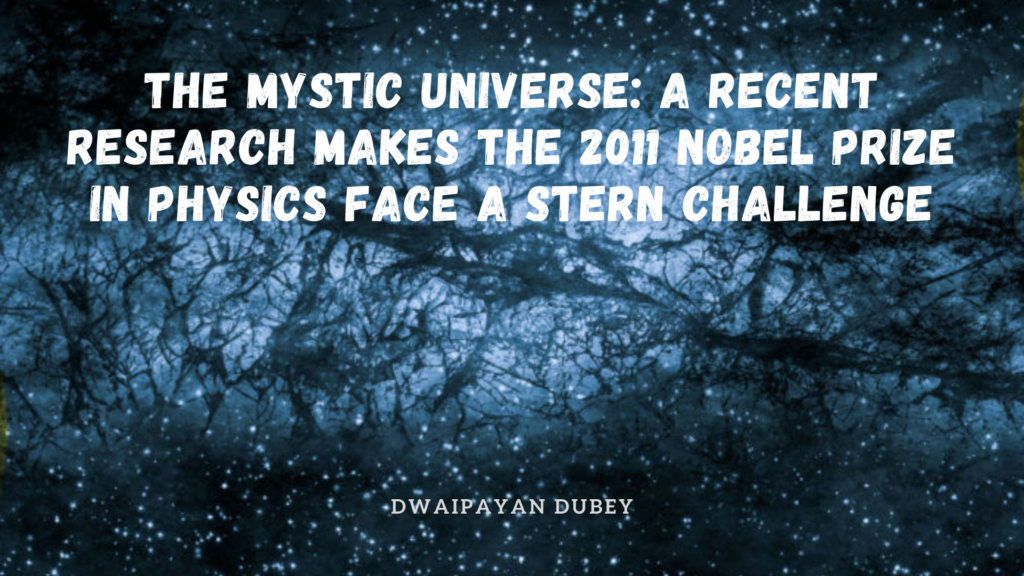
WHAT DO WE KNOW ABOUT THE UNIVERSE?
Let’s discuss what we know about the universe first. Well, according to the Big Bang model and measurement of Cosmic Microwave Background (CMB), it is considered that the universe had originated from an initial state with very high density and high temperature, known as Big Bang, which is assumed to have happened 13.8 billion years ago, and, from that, the General Theory of relativity (GTR) explains its evolution. What the most interesting thing is that the boundary of the universe started getting expanded with acceleration after 7 billion years of the Big Bang and the universe is expanding still, now.
WHAT IS MEANT BY THE “EXPANDING UNIVERSE”?
The boundary of the universe is getting expanded. The universe is thought to be a combined system of frames. Every galaxy or every cluster are thought to be in different frames. So, the galaxy is expanding means that the frames are getting stretched keeping the origin of the frame at the same position. As a result, the galaxies, the clusters and every element in the universe are moving away from each other.

WHY IS THE UNIVERSE EXPANDING?
Well, to deal with this problem, we need to know some new topics, which are the basics of most cosmological theories. We all know about the gravitational force, which is, by nature, an attractive force. So, one might think about how the universe is expanding though there is only gravitational force acting in the universe. So, there is something that acts against gravitation and is so powerful that it makes the universe expand in an accelerated manner. Here comes the concept of Dark Energy, which occupies about 68% of the total mass energy of the universe. Rest 32% is divided between visible or ordinary matter (5%) and dark matter (27%). Thus, dark energy plus dark matter constitute 95% of the total mass-energy content. All we can see in the universe are ordinary matter. Dark matter is called dark because it does not appear to interact with observable electromagnetic radiation, such as light, and so it is undetectable by existing astronomical instruments. Basically, the properties, the source and the examples of dark matter and dark energy are still unknown. Thus, it has a vast scope of research in future.

SOME MORE INFORMATION ABOUT DARK MATTER AND DARK ENERGY
In short, it can be said that Dark Energy is a property of space and Dark Matter is something that occupies space. Dark Matter’s presence is studied in different astrophysical observations, including gravitational effects which cannot be explained by accepted theories of gravity unless more matter is present than can be seen. For this reason, it is thought that Dark Matter is abundant in the universe, and it has had a strong influence on its structure and evolution.

Now, let’s discuss something about Dark Energy. The first observational evidence for its existence came from supernovae measurements, which showed that the universe expands in an accelerated way rather than a constant rate. Measurements of the CMB suggest that the universe began in a hot Big Bang. Without introducing a new form of energy, there was no way to explain how an accelerating universe could be measured. Since the 1990s, dark energy has been the most accepted premise to account for the accelerated expansion.
ABOUT THE 2011 NOBEL PRIZE IN PHYSICS AND THE NEW CHALLENGE
Saul Perlmutter, Brian P. Schimdt & Adam G. Riess won the 2011 Physics Nobel Prize for their contribution to understand the nature of expanding universe. The Nobel Prize was for “the Discovery of the Accelerating Expansion of the Universe through Observations of Distant Supernovae”. According to their theory, the universe is expanding symmetrically in all direction like a sphere. We know that the universe is homogeneous and isotropic (these two properties are considered to be the pillars of all existing theories on cosmology). It has the same property throughout space. Similarly, Dark Energy is also considered to act on the universe homogeneously, irrespective of direction. So, the distance between every two objects in the space should increase in the same manner, like football.
However, the recent research in Oxford University states a totally different theory which throws a challenge to all existing cosmological models and including the 2011 Nobel Prize winners too. The research work is based on the observation of 740 different supernovae (supernovae are formed after the explosion of stars, simply they are dead stars) which states that the universe is not expanding symmetrically, instead, it is expanding faster in a particular direction which makes the universe rugby-ball shaped.
Researchers are also saying that the Cosmic Microwave background also has the one-sidedness property. It is also not isotropic. Actually, the Nobel Laureates did their observation on 90 different supernovae. But, they all are in the same direction of the universe, and coincidentally, the acceleration of the universe in that direction is the highest. So, they came up with their theory with their experiment in small sample space (insufficiency of data) whereas, the recent research is done over a large sample space and in different directions. In this case, observational astronomy can play a vital role to get more and more data about the universe and lay a strong base for the cosmological models. If the new theory holds true, then all the concepts of Dark Energy & Dark Matter will get cancelled, and many things will have to be started again from the beginning.
References:
Images:
- Fig_1: https://www.google.com/search?q=dark+matter&client=ubuntu&hs=1Mi&channel=fs&sxsrf=ALeKk02IWweM-6dP-fpfe25vEVMy0v8i5Q:1589090371950&source=lnms&tbm=isch&sa=X&ved=2ahUKEwip9Yr5zqjpAhUb73MBHcCHBAgQ_AUoAnoECBkQBA&biw=1299&bih=639#imgrc=QqxLlSb7os-MDM
- Fig_2: https://www.google.com/search?q=dark+matter&client=ubuntu&hs=1Mi&channel=fs&sxsrf=ALeKk02IWweM-6dP-fpfe25vEVMy0v8i5Q:1589090371950&source=lnms&tbm=isch&sa=X&ved=2ahUKEwip9Yr5zqjpAhUb73MBHcCHBAgQ_AUoAnoECBkQBA&biw=1299&bih=639#imgrc=krfzmfQW3GhIUM
- Fig_3: https://www.google.com/search?q=dark+matter&client=ubuntu&hs=1Mi&channel=fs&sxsrf=ALeKk02IWweM-6dP-fpfe25vEVMy0v8i5Q:1589090371950&source=lnms&tbm=isch&sa=X&ved=2ahUKEwip9Yr5zqjpAhUb73MBHcCHBAgQ_AUoAnoECBkQBA&biw=1299&bih=639#imgrc=qdFB9b0i0biFvM
- Fig_4: https://www.google.com/search?q=dark+energy&client=ubuntu&hs=LiN&channel=fs&sxsrf=ALeKk00n1IB4qqwhD634sRML00X7D_gaSQ:1589090410726&source=lnms&tbm=isch&sa=X&ved=2ahUKEwj3xMmLz6jpAhXR7XMBHcmABNkQ_AUoAnoECBgQBA&biw=1299&bih=639#imgrc=AVQHmG6jLs5HoM
Information:
- Wikipedia
- Recent News from Oxford University
By, Dwaipayan Dubey, Department of Physics, IISER Kolkata
Edited By, Diptatanu Das, Department of Biological Sciences, IISER Kolkata
Nice and lucid explanation
Thanks for the feedback!